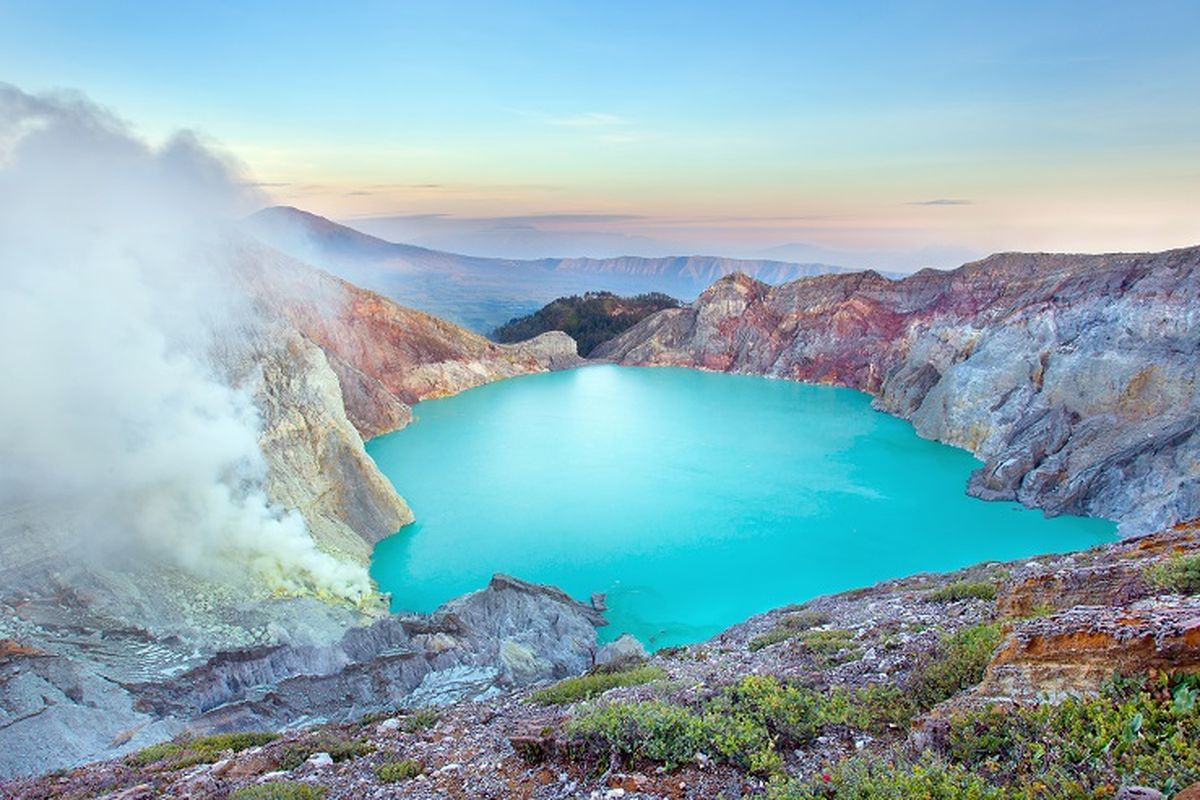Rising Waters on Ijen Crater Kills Sulphur Miner

BANYUWANGI, KOMPAS.com – Danger continued to lurk along the slopes of Mount Ijen in East Java’s Banyuwangi district, after a sudden rise in water levels on the crater lake of this active volcano killed one person earlier this June.
Head of Banyuwangi’s Emergency and Logistics Section of the Disaster Prevention Board (BPBD) Eka Muharram confirmed the tragedy, which occurred after tremors and poisonous gases occurred on Ijen. He added that the dead man was a sulphur miner identified as Andik, who was in the crater with another miner named Halimik, who survived.
“According to Halimik, both of them ran for their lives after they heard a boom originating deep inside the crater. They also saw a three meter wave resembling a tsunami on the shores of the crater [lake]” said Eka. “However, Andik slipped and fell into the waters of the lake. His fellow miners attempted to search for him, until darkness, high winds and rain cut short the rescue effort.”
Surabaya Search and Rescue Agency (BASARNAS) branch head Hari Adi Purnomo reiterated Eka. “They resumed the search the next day and found Andik’s dead body floating in the middle of the crater lake. [The authorities] evacuated his remains and curtailed sulphur mining on Mount Ijen.”
Eka also dismissed allegations that the freak wave which killed Andik was a tsunami. “Tsunamis do not occur on volcanoes. [The wave] is a natural phenomenon that occurs on a monthly basis” he said. “Underwater tremors deep inside the crater lake caused the waters to rise and inundate its shores.”
However, Center of Volcanology and Geological Hazard Mitigation Unit (PVMBG) head Hendra Gunawan believed other factors caused the inundation. “The tsunami like wave might be caused by a landslide near the crater. The landslide is perhaps caused by heavy rainfall during the rainy season” Hendra said.
“CCTV footage of the [Ijen crater] area showed that the color of the water in the lake have not changed much, as seismic data and water temperatures did not indicate any extra fluids under the crater. Surveillance dating to Thursday 29 May showed that four landslides occurred from 19 seconds to five minutes. ”
Authorities in East Java have declared Mount Ijen off limits for tourists, sulphur miners and locals and forbade any overnight stays a kilometer from the crater, even though volcanic activity on the mountain remained on normal levels. The sealed off areas include the edge of the crater and the shores of its lake.
Mount Ijen is one of Banyuwangi’s most iconic destinations. The highly acidic crater lake is recognized as the largest of its kind in the world, while thousands of tourists are also drawn by the Blue Fires, or ignited liquefied natural gases rising through cracks in the crater. (Author/Editor: Rahmawati, Author: Nur Rohmi Aida, Editor: Virdita Rizki Ratriani)
Simak breaking news dan berita pilihan kami langsung di ponselmu. Pilih saluran andalanmu akses berita Kompas.com WhatsApp Channel : https://www.whatsapp.com/channel/0029VaFPbedBPzjZrk13HO3D. Pastikan kamu sudah install aplikasi WhatsApp ya.































